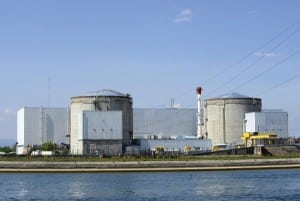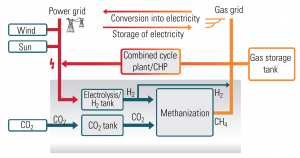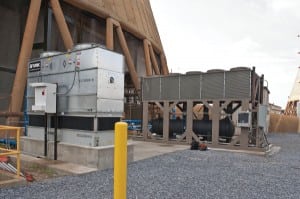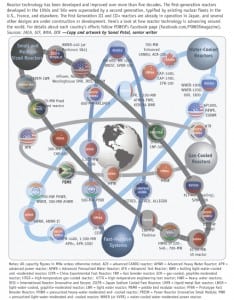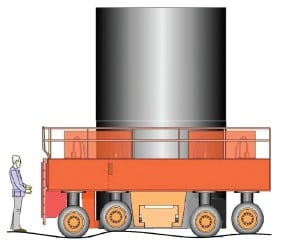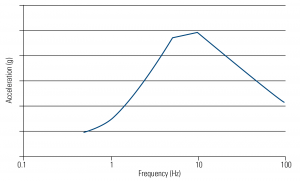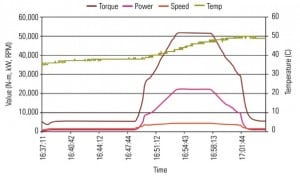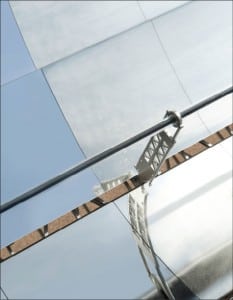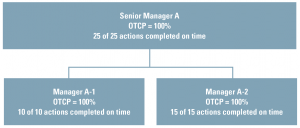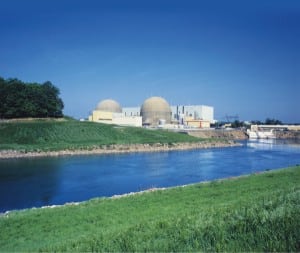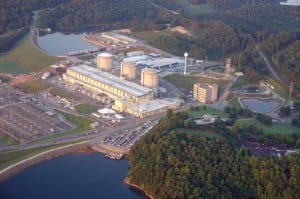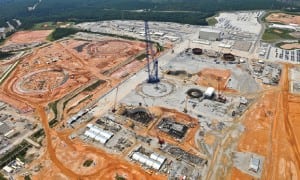In This Issue
-
Nuclear
Too Dumb to Meter, Part 5
As the book title Too Dumb to Meter: Follies, Fiascoes, Dead Ends, and Duds on the U.S. Road to Atomic Energy implies, nuclear power has traveled a rough road. In this POWER exclusive, we present the sixth and seventh chapters, “The Bomber to Nowhere” and “The Road to Jackass Flats,” which begin the “Up in the Air: Flights of Radioactive Fancy” section.
-
Coal
Potential Impacts of Closed-Cycle Cooling Retrofits at U.S. Power Plants
The Clean Water Act Section 316(b) rule changes regarding cooling water intake structures that are expected next year could affect up to 428 power plants, representing 1,156 individual units, according to the Electric Power Research Institute. Depending on plant size and the complexity of the retrofit project, retrofit capital costs could range from very low to over $500 million for large nuclear plants. The power industry total cost is projected to be over $100 billion.
-
News
Economic Meltdown
The bill for German Chancellor Angela Merkel’s coalition government’s knee-jerk decision to close all 17 of its nuclear plants by 2022 is coming due. Merkel’s energy plan is to radically expand the use of renewable energy to 35% of total power consumption by 2020 and to 80% by 2050. Currently, renewables represent 20% of the country’s energy mix.
-
Environmental
Hazy Timetable for EPA’s Proposed Tighter PM2.5 Standards
On June 15, in response to a court order, the U.S. Environmental Protection Agency (EPA) proposed new lower limits on particulate matter (PM) emissions that are scheduled for release in mid-December, although that deadline may be missed. Even with implementation delays, now is a good time to start paying closer attention to the requirements of the proposed standard.
-
Nuclear
France Considers Departure from Iconic Stance on Nuclear Energy
No other country has been as frequently cited as an example of exploiting the virtues of a nuclear-heavy energy policy as France. Deriving more than 75% of its electricity from 58 operational nuclear reactors with a total capacity of about 63 GW, France has one of the lowest costs of generation and is the world’s largest net exporter of power, earning €3 billion ($3.9 billion) a year from sales of surplus power to buyers beyond its borders. But that is all about to change.
-
O&M
The Evolution of Steam Attemperation
The fundamental design principles and process for modern steam desuperheating, or the attemperation of superheated steam in the power generation industry, have been evolving since the early 1930s. Meeting the requirement for steam quantity, quality, and temperature consistency is the foundation of traditional attemperator component design, particularly for fast-response combined cycle plants.
-
Business
After Blackouts, India Plans Reforms
The back-to-back collapse at the end of July of India’s Northern, Eastern, and Northeastern grids that slashed power to more than 60% of India’s population of 1.24 billion has impelled the country into a spending frenzy to upgrade its rickety power network, which, a government inquiry revealed, was one cause of the unprecedented blackouts.
-
News
Portable Milling Machine for Linear and Gantry Milling
The Climax LM5200 and LM6200 portable milling machines are designed with a split rail system to easily perform both linear and gantry milling with a minimum of changeovers. A rigid, modular bed design allows shorter bed sections to be combined to fit the length of the work area, without losing rigidity, and to extend the […]
-
Gas
Progress for Germany’s Power-to-Gas Drive
Germany’s E.ON this August began construction of a new pilot plant in Falkenhagen in northeast Germany that will convert excess wind energy into synthetic natural gas that can then be fed into the regional gas grid, where it can be used to produce heat and power.
-
Commentary
Preparing for the EPA’s Cooling Water Rule
With the U. S. Environmental Protection Agency’s (EPA’s) issuance of a final rule regulating cooling water intake structures at existing facilities potentially less than a year away, facilities should be paying close attention to the proposed rule’s provisions, data requests, and study requirements as they evaluate their compliance options and begin to formulate their compliance […]
-
Water
Research Center Dedicated to Power Plant Water Use Opens
The Electric Power Research Institute and several partners—including the Southern Research Institute, Southern Co. subsidiary Georgia Power, and Southern Research—are testing a new technology that could reduce the amount of water needed for power plant cooling.
-
Business
POWER Digest (November 2012)
Global Companies Take on Nigeria’s Newly Privatized Plants. Nigeria’s $1 billion liquidation of five government-owned thermal and hydropower generation companies—part of a wider privatization effort that includes transmission and distribution assets to encourage investment in the power shortage–stricken country’s electricity sector—has attracted a number of global companies and investors. Eight firms bid a total of […]
-
News
Vertical Nuclear Waste Cask Transporter
Intelliport Corp.’s newly introduced self-loading OmniLoader can safely and efficiently move nuclear spent fuel using proven fluid suspension technology. Licensed to Wheelift Systems, the vertical cask transporter is a self-loading pneumatic-tired carrier that engages the cask at the bottom, to then lift and carry, allowing for more efficient movement within and between independent spent fuel […]
-
Nuclear
Seismic Instrumentation at Nuclear Power Plants
When a nuclear power plant experiences ground motion due to an earthquake, an evaluation may be needed before allowing the plant to continue operating or to resume operating if it has been shut down, as was the case after the seismic event that shut down both units at Dominion’s North Anna Power Station on August 23, 2011.
-
News
Spent Fuel Multi-Monitor System
The new 1E-qualified CL86 Plus Spent Fuel Pool Multi-Monitor System from Fluid Components International (FCI) integrates three critical measurements: continuous level, point level, and temperature into a multi-variable solution designed specifically for spent fuel pool (SFP) applications in nuclear power plants. Maintaining water levels within spent fuel pools is of vital importance to ensure that […]
-
O&M
Maximizing Steam Turbine/Compressor Performance with Precise Torque Monitoring at the Coupling
All turbo machinery is subject to degradation that, over time, will affect the system’s efficiency and operational performance. Precise monitoring of turbo machinery performance with continuous torque-monitoring systems can be used to identify gradual efficiency loss. That, in turn, allows a more focused maintenance scope to be developed that can return the system to its optimum operation and efficiency.
-
News
Dust-Repelling Coating for Solar Thermal Mirrors
Germany-based solar mirror maker Flabeg has developed an anti-soiling coating for solar mirrors used in solar thermal power plant applications, duraGLARE, which can repel dust and sand from the surface of mirrors. Dirt on mirrors can be reduced up to 50% compared with panels that are not coated, the company claims. As well as an […]
-
Business
Measuring On-Time Completion to Improve Your EHS Audit Program
A number of factors promote effective and responsible completion of EHS audit action plans, with the most important being the proper alignment of responsibility and authority for developing and implementing the audit action plan.
-
News
Improved Thermal Images
Measurement technology specialist Testo announced the new Testo 875i thermal imager, a professional quality and versatile thermal imager with very high thermal sensitivity, outstanding image quality, and simplified ease of use. With the device’s high thermal sensitivity of less than 50 mK, and the outstanding image quality of 160 x 120 pixels (which can be […]
-
Legal & Regulatory
EPA’s Title V Source Policy Takes a Hit
Location, location, location. This has long been the guiding principle for selling real estate. Now, due to a recent appellate case, the U.S. Environmental Protection Agency (EPA) has learned this concept’s importance in determining under what conditions multiple facilities can be aggregated as a single source under the Clean Air Act (CAA) Title V permitting […]
-
News
Combination Cutting Torch
ESAB introduced a new, improved line of combination cutting torches as part of the new Purox Elite Series of gas apparatus products. The Purox Elite Series Combination Torch includes the WH-4200 welding handle and the CA-4200 cutting attachment. The torch welds material up to 1 inch thick and cuts up to 8 inches in thickness. […]
-
Nuclear
Top Plant: North Anna Power Station, Louisa County, Virginia
In 2007, Dominion Resources contracted Alstom to perform steam turbine retrofits on two generating units at its North Anna nuclear power station. The Unit 1 retrofit, with its ongoing instrumentation upgrade, was the second to be completed at the North Anna plant and the fourth overall for Dominion. Completion of this project marked a significant milestone in terms of both technical achievement and investment in providing clean, safe, and reliable baseload electricity for Dominion customers.
-
Nuclear
THE BIG PICTURE: Water-Cooled Reactors
A “who’s doing what” addendum to "THE BIG PICTURE: Advanced Fission" in our November 2012 issue.
-
Nuclear
Top Plant: Oconee Nuclear Station, Seneca, South Carolina
With license extensions for its three units in hand, Duke Energy’s Oconee Nuclear Station began a digital controls upgrade program in 2006, and in January 2010, AREVA became the first supplier to receive Nuclear Regulatory Commission approval for a safety-related digital instrumentation and controls system.
-
O&M
Dominion’s North Anna Station Sets New Standard for Earthquake Response
On August 23, 2011, at 1:51 p.m., a magnitude 5.8 earthquake knocked both units at Dominion’s North Anna Power Station off-line—the first time such an event has occurred in the U.S. After 80 days of extensive evaluation and inspection by plant staff and representatives from the U.S. Nuclear Regulatory Commission, both units were back online. What occurred during those days is a remarkable story.
-
Nuclear
What Worldwide Nuclear Growth Slowdown?
Data detailing plans for new nuclear reactors worldwide show few effects of the March 2011 Fukushima accident. China and Russia in particular continue to be hot spots for nuclear development, but cost overruns, construction glitches, and ongoing safety reviews are slowing construction projects elsewhere.
-
Nuclear
Post-Fukushima Nuclear Power Development in China
China regards nuclear energy as a critical part of its strategic goal of achieving sustainable economic development while reducing environmental pollution. An analysis by North China Electric Power University predicts that the pace of nuclear power development may slow for a short time as a result of the Fukushima accident, but nuclear power is still a top development priority.




